Railroad Track Gauge
Posted
#135004
(In Topic #7200)
Full Member
Wayne
Railroad tracks
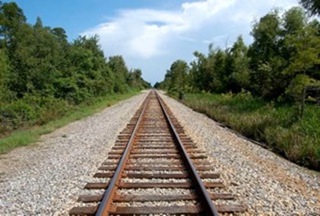
The U.S. standard railroad gauge (distance between the rails) is 4 feet, 8.5 inches.
That's an exceedingly odd number.
Why was that gauge used? Because that's the way they built them in The UK, and UK expatriates designed the U.S. railroads.
Why did the British build them like that?
Because the first rail lines were built by the same people who built the pre-railroad tramways, and that's the gauge they used.
Why did 'they' use that gauge then? Because the people who built the tramways used the same jigs and tools that they had used for building wagons, which used that wheel spacing.

Why did the wagons have that particular Odd wheel spacing?
Well, if they tried to use any other spacing, the wagon wheels would break on some of the old, long distance roads in the UK, because that's the spacing of the wheel ruts.
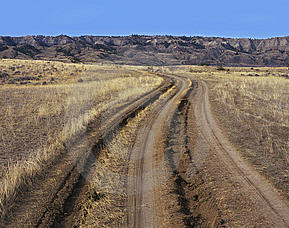
So, who built those old rutted roads?
Imperial Rome built the first long distance roads in Europe (including England and Wales) for their legions. Those roads have been used ever since.
And the ruts in the roads? Roman war chariots formed the initial ruts, which everyone else had to match for fear of destroying their wagon wheels.
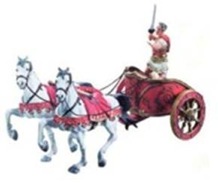
Since the chariots were made for Imperial Rome, they were all alike in the matter of wheel spacing. Therefore, the United States standard railroad gauge of 4 feet, 8.5 inches is derived from the original specifications for an Imperial
Roman war chariot. In other words, bureaucracies live forever.
So the next time you are handed a specification, procedure, or process, and wonder, 'What horse's ass came up with this?' , you may be exactly right.
Imperial Roman army chariots were made just wide enough to accommodate the rear ends of two war horses.

Now, the twist to the story:
When you see a Space Shuttle sitting on its launch pad, you will notice that there are two big booster rockets attached to the sides of the main fuel tank.
These are solid rocket boosters, or SRBs. The SRBs are made by Thiokol at their factory in Utah.

The engineers who designed the SRBs would have preferred to make them a bit larger, but the SRBs had to be shipped by train from the factory to the launch site. The railroad line from the factory happens to run through a tunnel in the mountains, and the SRBs had to fit through that tunnel. The tunnel is slightly wider than the railroad track, and the railroad track, as you now know, is about as wide as two horses' behinds.
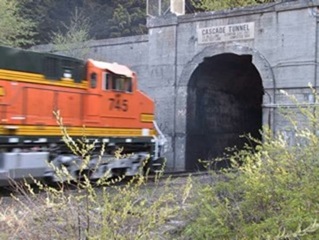
So, a major Space Shuttle design feature
Of what is arguably the world's most advanced transportation system was determined over two thousand years ago by the width of a horse's ass.
And you thought being a horse's ass wasn't important!
===================================
Now you know, Horses' Asses control almost everything…
Explains a whole lot of stuff, doesn't it?
===================================
Posted
Full Member
The actual roads built by the Romans in UK (and elsewhere) were usually between 8 and 40ft wide. The 8ft ones, just wide enough to allow 2 chariots to pass and the wider ones, wide enough to allow soldiers to march in their standard formation of "6 abreast" using an allowance of 3ft per soldier. Thus, 2 columns could pass on the wide roads with 4ft to spare.
Clever guys these Romans and there's far more than rail track gauges we have them to thank for. I wonder what went wrong in Italy since that empire collapsed ………..:roll::roll::roll:
 ?
?
'Petermac
Posted
Full Member
Terry (Mr. Sceptical)
Posted
Full Member
Willliam;-)
Posted
Full Member
Wagons , chariots and the like have been in use since the wheel was invented - thought to have been around 8,000 BC but it's not the chariot or cart we're talking about. It's the gauge and the Romans are generally credited with standardising that.
Regarding their roads, again we're not talking about their actual roads still being in use but the routes they took. Watling Street and Ermine Street being perhaps the most famous but others are still followed to this day.
Romans built roads in straight lines because that's the shortest route between two points and, as they (or rather, their Legions), walked everywhere, distances were critical.
Occasionally, they'd hit an obstacle they couldn't walk through or over or under, so they went around or followed a land contour. These deviations still used the shortest possible route.
After the Romans left, Britain went into the Mother of all recessions. It took artound 400 years to climb out of it back to where we'd been when they left. That period was "The Dark Ages".
The land was generally carved up by barons and land-grabbers who had little or no use for long distance roads. Their interests ceased at the edge of their estate so the Roman roads were either left to decay or stripped of their stone for use in buildings elsewhere. Only the main routes remained largely untouched and it's those that remain to this day.
During feudal times, "fields" came into being. These were usually roughly rectangular and the tracks went around the outside edges. As "farming" developed, there became a need to "market" produce rather than eat it yourself so transport also developed. Horses were unable to haul heavy loads up steep gradients so tracks either zig-zagged up the hills or went up diagonally to reduce the gradient for the poor old horse. Drovers roads did tend to use the shortest route although they would also need to avoid forrests where wolves might lurk and link up overnight "safe grazing" and water points.
Next time you drive along a rural road, ask yourself why it winds so much. I'll bet it roughly follows the outline of old fields. That's why the Roman roads show up on the OS maps under those fields.
Scotland as you rightly say, was never part of Roman Britain but many of the trunk roads were built by General Wade between the two "Stuart" rebellions in the mid 18th century. He was impressed by the Roman ideas about linking points on the map so, wherever possible, he did the same thing - and for the same reason : to move armies of foot soldiers quickly. Hence the "straight" trunk roads north of Hadrian's Wall.
'Petermac
Posted
Full Member
I must bow to your superior knowledge! I actually walked along some of General Wade's military roads in Scotland and all I can say is "pity the poor foot-soldier, it ain't no M1 Motorway!" My elder brother who is a bit of an amateur historian (mind you, he holds a degree in history), has an interesting reply to any assertion of 'fact', such as the story above. "Prove it" he will say. "Show me the evidence". I think it's fair to say that you have done that admirably in your reply. Mind you, there is a great danger that some fiction has become 'fact'. Ask any number of people in the UK to name the first steam locomotive. Discounting the 'don't knows' a majority of those left will probably say 'The Rocket'. Leaving aside the fact that it was and still is called 'Rocket' without the 'The', we know that it wasn't built until twenty-five years after Trevithick's Pennydarren locomotive. Even so, I have hearsay evidence of the 'fact' that 'The Rocket' was the first steam locomotive having been printed in a school textbook. Sad.
Terry
Posted
Full Member
I must also offer some support to General Wade and his road men. Imagine what the M1 would look like if it had gone 250 years without any maintenance !!


 In their day, they were pretty good roads for their purpose, as indeed, were the Roman roads.
In their day, they were pretty good roads for their purpose, as indeed, were the Roman roads. I suspect it's almost impossible to "prove" ancient historical facts. Many were handed down rather like Chinese Whispers but for me, if there are no obvious errors (such as petrol engined chariots etc.) and the facts fit, then it's very likely to be true. I suspect historians come up with a fact based theory and leave it to others to disprove it. I am refering to events which happened before the printed word of course.:roll:
'Petermac
Posted
Full Member
Terry
Posted
Inactive Member
We're not model train nutters - we're mechanical anthropologists.

Max
Port Elderley
Port Elderley
Posted
Full Member
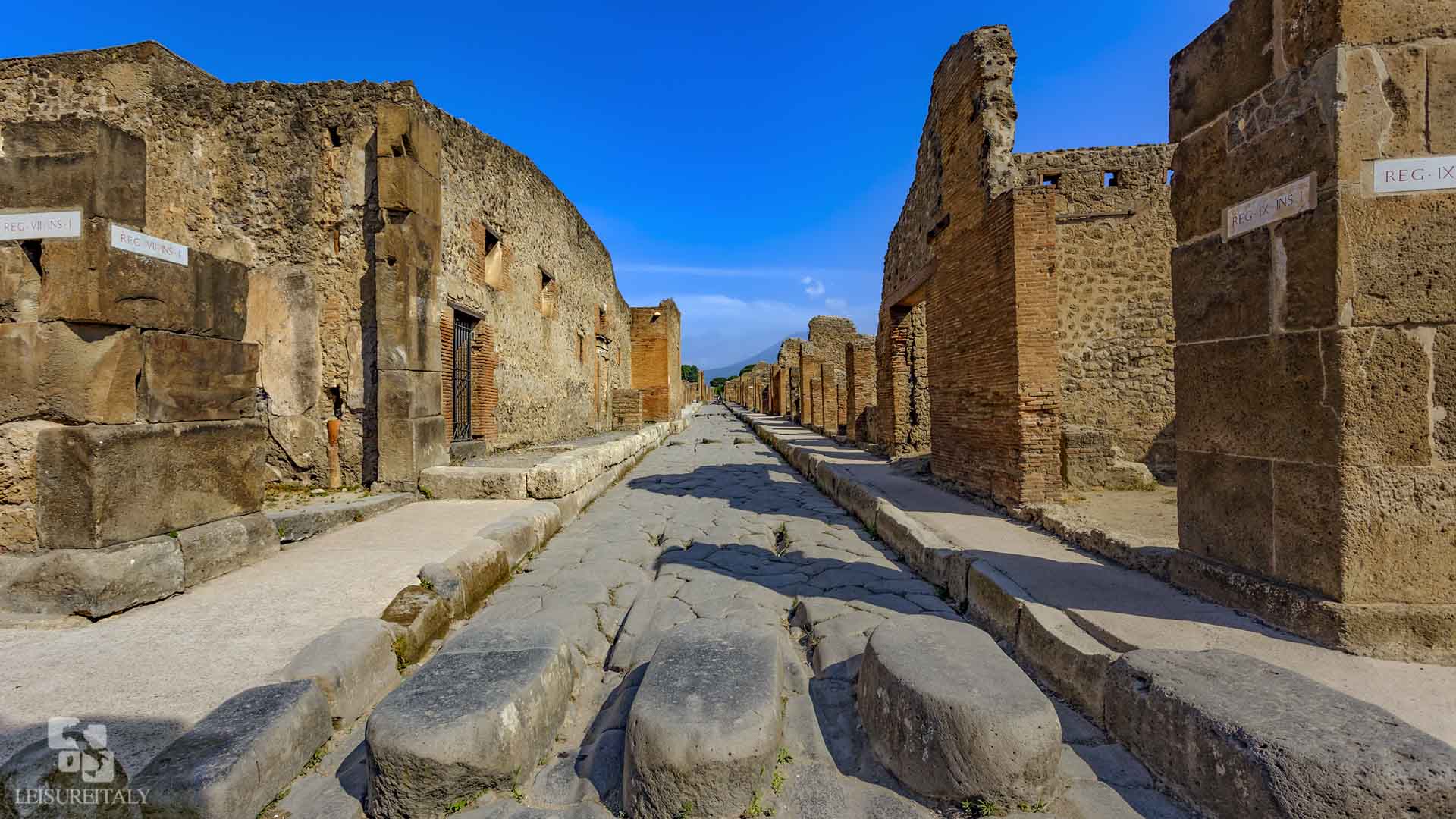
Oh well back to the asylum
Posted
Full Member
A nice example showing why an out of gauge wagon or chariot would have trouble in those streets.
It's fascinating stuff, I've just re-read the OP and had a nice chuckle. The thought of the Shuttles SRBs being limited in size because of a couple of horses arses is wonderful.
Posted
Full Member
Standard gauge was anything but before the civil war in the US.
NIgel
©Nigel C. Phillips
Posted
Full Member

Doug
'You may share the labours of the great, but you will not share the spoil…' Aesop's Fables
"Beer is proof that God loves us and wants us to be happy" - Benjamin Franklin
In the land of the slap-dash and implausible, mediocrity is king
"Beer is proof that God loves us and wants us to be happy" - Benjamin Franklin
In the land of the slap-dash and implausible, mediocrity is king
Posted
Full Member
Nigel
©Nigel C. Phillips
Posted
Full Member
:pedal Puts on tin hat and heads for bunker.
Posted
Full Member
Stephenson couldn't see the cart for the horses!
Nigel
©Nigel C. Phillips
Posted
Site staff

When you start looking around it's amazing how non-standard, standard gauge is.
Ed
Posted
Full Member
Oh well back to the asylum
Posted
Full Member
The Royal Commission on Gauges recognised the superiority of Brunel's design, especially smooth running. The original design used vertical timbers which caused undulation as the track and ballast settled. The design of baulk road called for pine packing under the rails, this acted as a shock absorber for hammer blow from 2 piston engines, which was additionally spread out over the length of the baulk timbers rather than on a piece of suspended rail or a few sleepers. The GWR and affiliates were not the only railway in the UK to use ladder track in the 19th century. Baulk road with bridge rail was still in use at Didcot on the exchange track/provender siding in standard gauge form until the early 20th century. Still used today in many places worldwide, albeit usually in reinforced concrete.
Driving on the left goes back to the 14th century and a papal edict. The Romans drove in the left as well. Unlike the UK, France did not have a standardized system of linear measurement until I think 1795 when it went metric (although the old and new systems were used until 1840). The forerunner of the metric system dates to the 17th century.
The DC metro system here has a gauge of 4' 8.25" , technically narrow gauge. Lots of examples of non-standard "standard gauge" in mass transit systems in use today. Most of the TTC in Toronto is 4' 10.875"
I read somewhere that only 55% of the world railway systems use standard gauge.
An interesting topic.
Nigel
©Nigel C. Phillips
Posted
Full Member
Oh well back to the asylum
1 guest and 0 members have just viewed this.

